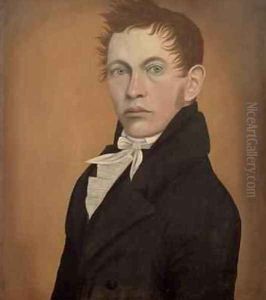Harlan Page Paintings
Harlan Page was an American artist, engraver, and instructor, known for his contributions to early 19th-century American printmaking and for his role as a teacher of drawing and engraving. Born in 1791 in Coventry, Connecticut, Page was part of a generation of artists who were active during a time of burgeoning national identity in the United States.
Page's early life is not extensively documented, but it is known that he developed an interest in the arts at a young age. By his twenties, he had moved to New York City, which was becoming a major center for the arts in America. There, he became associated with the National Academy of Design, an institution founded in 1825 by a group of artists, including Samuel F. B. Morse, intent on promoting the fine arts in America through education and exhibitions.
Throughout his career, Page worked primarily as an engraver. He created a variety of works, including banknotes, maps, book illustrations, and portraits. His engravings were recognized for their precision and clarity, which was particularly important in the era before photography, as engravings were a primary method of reproducing images for books, magazines, and other printed materials.
In addition to his engraving work, Page was passionate about education and played a significant role in the development of art instruction in the United States. He taught at the National Academy of Design and was involved in the establishment of drawing classes for young students. His commitment to teaching was driven by the belief that art education was essential for both the individual development of talent and the cultural growth of the nation.
Harlan Page's contributions to the arts were cut short by his untimely death in 1834 at the age of 43. Despite his relatively short life, his influence as an engraver and educator left a lasting impact on the American art scene of the 19th century. His works continue to be of interest to those studying American art history and the development of printmaking in the United States.
